The Baroque style, born in Italy and spread throughout Europe, is divided into three periods: Early Baroque, High Baroque, and Late Baroque.

Image source: https://search.creativecommons.org/photos/9bb7a0bf-9617-43a0-b7bd-f2c96ac0c012 by Leandro’s World Tour
The Origin of the Term
The term Baroque is derived from Italian barocco, which philosophers used in the Middle Ages to describe errors in logic schemes. Later, the word came to denote any contorted idea or complicated thought. Another possible origin of this word comes from the Portuguese barroco (Spanish barrueco), used to talk about an imperfectly shaped pearl. This way of using this word still survives in the jeweler’s term “baroque pearl.”
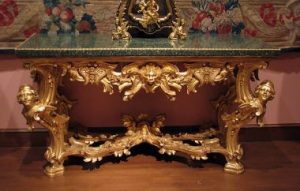
Architecture
Baroque architects created buildings as a single mass to be shaped according to particular requirements. On the facade elements like columns and pilasters are linked in various ways to the center. The facade looks divided horizontally, yet it is organized vertically. St. Peter’s Square in Vatican City is an important example of this style. It was finished in 1615 under Paul V, and has a three aisle Latin cross with a dome above the altar, which covers the shrine of St. Peter the Apostle. The edifice is a key pilgrimage site for Christians.
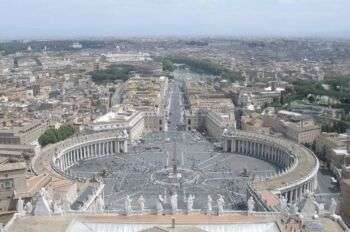
Image source: https://search.creativecommons.org/photos/14f51788-cfc4-461b-a760-acb07ee0e18b by Argenberg
The interior of St. Peter’s Basilica features masterpieces from the Renaissance period and in the Baroque style. The most famous are works are Michelangelo’s Pietà and the Baldachin, made by Berninil, over the main altar. The tomb of Urban VIII and the cathedral of St. Peter are relevant too.
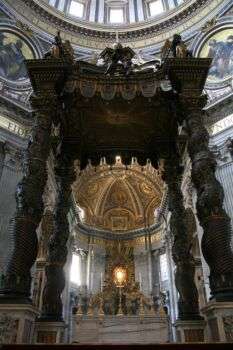
Image source: https://search.creativecommons.org/photos/ef15b7e5-4717-4e5f-a408-ee9e4a58f76a by Jean-Pol GRANDMONT
Baroque Design Characteristics
Like all other styles Baroque has its features:
- Gilded frames used in paintings and mirrors and usually featured several cartouches, carved flowers, and sculpted figures.
- Italian furniture of this period often had raised lids, and were decorated with carved leaves and figures.
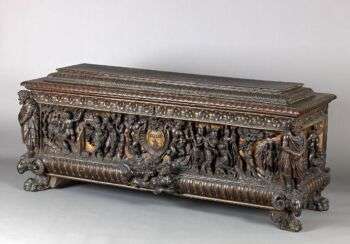
- Decorations were sumptuous. Carved wood was often detailed with gold or bronze, and legs, for example, in tables were caryatids or muscular figures, made to look like they were sustaining the marble slab put on top.
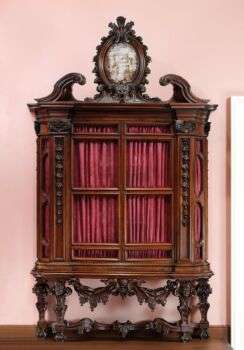
- Segments and strap work included new key characteristics such as pilasters, panels forming arches, and pietra dura designs. Many religious or mythological themes were painted inside the panels to improve the decorations of the object.
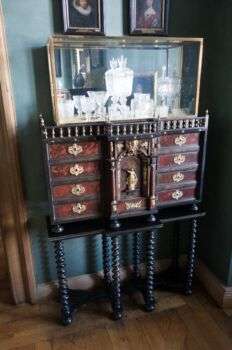
Image source: https://search.creativecommons.org/photos/09540eb9-bcd8-408f-b7c5-30d78ed16434 by quinet
- Commodes, for example, were made of walnut or oak, pearl, jewels, and ivory, to form up allegorical stories. They were decorated, most of the time with angels, animals, and leaves. They were also called lion commodes due to their feet resembling the animal.
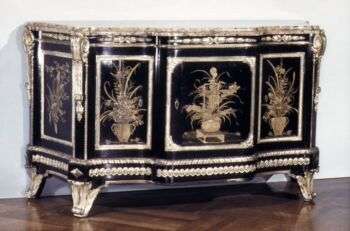
- Tables varied greatly during the period but were usually made of gilded wood, oak, or walnut. Large tables were elongated, rich, and grandiloquent, while smaller ones were ornate and featured carved geometrical forms.
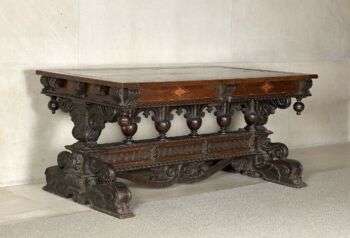
Baroque Sculpture
The Cornaro Chapel is a famous Baroque Church of Santa Maria della Vittoria in Rome. It houses one of Bernini’s most ambitious masterpieces: The Ecstasy of Saint Teresa. An illuminating light comes from a hidden window at the rear of the altar. Divine light descends upon the agitated Teresa at the apex of her spiritual ecstasy. Sculpted in white marble, she is surrounded by gilt bronze representing the divine light.
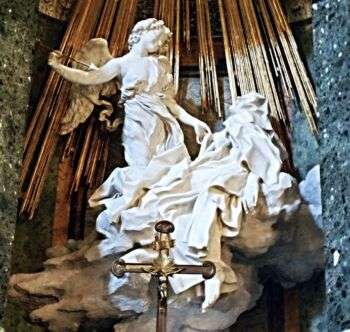
Image source: https://search.creativecommons.org/photos/03656560-b0ec-4433-966e-6f72a20a489a by Carlo Raso
Info source:
http://www.visual-arts-cork.com/history-of-art/baroque-architecture.htm
http://www.visual-arts-cork.com/sculpture/baroque-sculpture.htm#sculptures
